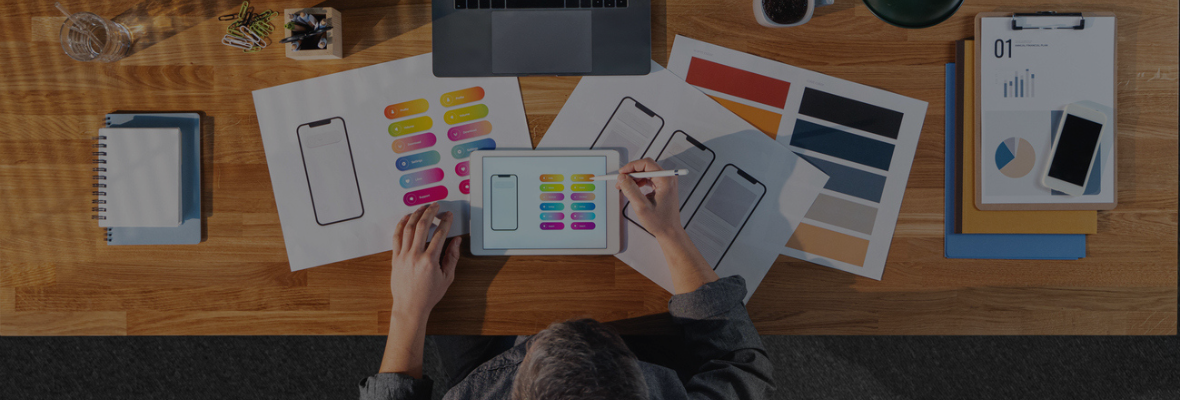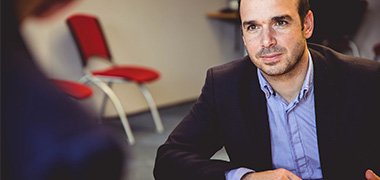How to start a Career in Human-Centred Design
Written by Craig Shepherd
25th February 2025Industry Expert: Karen Monjo
Talent Agent - Design & Development
In the modern marketplace, where connecting with customers is more important than ever, companies are turning to experts skilled in Human-Centered Design (HCD). HCD is all about putting people at the heart of the design process, focusing on their needs, behaviours, and experiences. In doing so, businesses ensure their products and services are designed with the end-user in mind.
To learn more about this line of work, we spoke with Karen Monjo, a Talent Agent at Aquent specialising in HCD recruitment. Let’s jump in and find out more about careers in Human-Centred Design.
What is Human-Centred Design?
In very simple terms, Human-Centred Design involves creating products, services and experiences that truly connect with end users. Essentially, the role is all about understanding the people you’re designing for and developing solutions that fit their needs. From the initial project research and consultation with clients, HCD specialists must be able to learn precisely what the end user wants, both in functionality and aesthetics during the entire customer journey.
Karen explained that HCD also involves understanding the customer’s challenges, frustrations, and needs. When end users find products and services easy, meaningful and engaging, it creates a positive experience that leads to sales, repeat business and many more benefits.
It’s important to note that HCD isn’t just limited to the digital world. In fact, many industries incorporate HCD principles into design, whether it’s websites or physical products.
What job roles exist in Human-Centred Design?
Although human-centred design is a relatively new field in the scheme of things, it has rapidly become a crucial concept across a range of different roles. Some of these include:
- User Experience (UX) Designers: These designers focus on how users interact with a product, making sure it meets user needs. They conduct user research, create personas, and map out customer journeys to inform the design process.
- User Interface (UI) Designers: UI designers are responsible for the visual aspects of a product or service. They ensure products, experiences and services are both aesthetically pleasing and functional.
- Service Designers: A service designer plans and maps out the entire service experience, taking into account every customer interaction. Their goal is to ensure smooth, hassle-free and effective services for customers.
- Customer Experience (CX) Designers: Similar to service designers, a CX designer pays special attention to how a customer interacts with a product or service and tailors the experience to be as meaningful and engaging as possible.
- Product Designers: It’s a product designer’s role to oversee the entire product development process, ensuring HCD principles are applied to meet user needs.
- Graphic Designers: Many graphic designers now specialise in HCD, as their role is typically about communicating messages and brand identity to customers.
This list is not exhaustive, of course. As the design industry constantly evolves, there are new positions being created daily. Karen noted though, that regardless of the job title, HCD experience is highly valued in any type of design role.
Essential skills and qualifications
To build a rewarding career in Human-Centred Design, you’ll need a healthy mixture of formal training and practical experience. Let’s explore the essential skills in more detail.
Technical and design skills
A strong foundation in design principles is crucial. This includes an understanding of typography, colour theory, layout, and visual hierarchy. To be considered a HCD expert, you’ll also need to be proficient in popular industry software tools such as Adobe Creative Suite (Photoshop, Illustrator, InDesign) and collaborative design tools like Figma.
Educational background
While there isn't a specialised 'Human-Centred Design Degree,' many design programs integrate HCD principles into their curriculum. Degrees or diplomas in Graphic Design, Digital Design, or a Bachelor of Arts and Design provide a strong educational basis and teach students the fundamentals of design – essential knowledge for all designers.
Karen mentioned that formal education is highly valued, especially for senior roles, but this is partly because experience is so important in HCD. Without formal design training, people find it difficult to gain jobs that allow them to develop their skills.
Soft skills
Often forgotten in roles where you need to be technically skilled, soft skills are absolutely essential for Human-Centred Design. A designer’s main role is to understand the needs of their clients and end users. To do this, they must be able to consult thoroughly, listen attentively and interpret client needs. They also need to prompt clients, drawing out the information they need to design fit-for-purpose products and services.
Understanding client needs is such a crucial part of HCD, that Karen suggested that soft skills are typically held in just as high regard as technical skills.
Bootcamps and short courses
In recent years, there has been an explosion of short courses focusing on HCD, known as boot camps. These courses usually run for 8-12 weeks and offer a fun, engaging way for participants to learn more about Human-Centred Design. While they’re great for gaining an overview, the issue is that they often come with the promise of being job-ready for HCD roles, which isn’t necessarily accurate.
Karen explained that to be successful in HCD positions, you still need a solid foundation in design, either through formal education, experience, or ideally a combination of both. In that sense, these crash courses in HCD are valuable for people already skilled in design. But for people new to the industry, they simply don't provide students with the design skills to hit the ground running in a HCD position.
Starting your career in Human-Centred Design
If you’re looking to work in the HCD field, the best place to start is with formal education. As we touched on, there is no mandatory educational requirement, but design qualifications are highly, highly valued.
There are a number of courses you could consider, as a lot of design training is specific to a certain industry. For example, you might consider a Bachelor of Design (Graphic Design), a Certificate IV in Design or a Bachelor of Design (Digital Technologies). There are countless terrific design qualifications you can pursue. From short UX design courses to an Advanced Diploma in Creative Product Development, there are several ways to learn the fundamentals of design.
Karen also stressed the importance of your portfolio. In order to demonstrate your problem-solving ability, creativity and understanding of HCD, you’ll likely need some practical experience. So, while studying, try to participate in internships, entry-level roles, or freelance work. This allows you to develop your practical skills and enter the workforce with more confidence.
Where do Human-Centred designers transition from?
Many professionals transition into Human-Centred Design from related fields such as graphic design, digital design, or marketing. This is because HCD positions rely so heavily on a person’s understanding of design principles, so previous experience is invaluable.
Karen notes that for many designers, moving into Human-Centred Design is a natural progression that may not even constitute a new position. It may simply be an existing design role that changes to incorporate a greater focus on the end user.
Some people do transition from non-design roles; however, it is less common.
Challenges in starting your HCD career
One of the hardest things about gaining HCD roles is the fact that the market is so competitive. If you don’t have formal design training, it’s not impossible to get a job, but you’ll find it difficult to compete against more experienced candidates.
Karen highlighted that the market can sometimes feel saturated, and getting hands-on experience is often the hardest part for new designers. Her advice is to build experience any way you can, such as internships, job shadowing opportunities, or even working as a freelancer to grow your portfolio.
How to stand out to recruiters and employers
To make an impression on recruiters and employers, it’s vital to present your skills effectively. Without mandatory training requirements, employers must rely heavily on a designer’s portfolio, formal qualifications and experience. To demonstrate these qualities, Karen suggested keeping resumes and portfolios clean, well-organised and focused. Many people overcomplicate their portfolios, often including more information than recruiters really want to read
Remember, HCD is all about understanding what people want and giving it to them. So, before applying for any role in this industry, do your research and stick closely to the application guidelines.
According to Karen, using plenty of white space in your portfolio makes it easier to read and helps key projects stand out. Demonstrating soft skills, such as collaboration and problem-solving, is also essential to setting yourself apart from other candidates.
Career advancement opportunities
Human-Centred Design offers plenty of opportunities for career growth, especially as the industry is evolving so quickly. As more companies realise the importance of user-focused design, the demand for HCD professionals will always rise.
However, to advance, you really need to gain valuable experience and keep developing your design skills. Advancement may not necessarily be a promotion, either. It could be a move sideways into a different industry, while still focusing heavily on design.
As the industry grows, there are also opportunities opening up for people who choose to specialise in certain areas like UX research, service design, or product management.
Will AI affect a career in Human-Centred Design?
One question that people should ask when considering career options is whether they will be impacted by artificial intelligence (AI). AI is rapidly changing the world, not just the job market. In particular, people in creative roles often worry about the effects on their ability to earn an income.
We discussed this with Karen, who felt that if anything, AI can enhance a designer’s role. The biggest AI movement is likely to be around the software and tools that designers use, meaning the inherent human skill of creativity is still very much in demand.
A vital component of design is understanding human needs and emotions, and finding creative solutions. These are skills that machines aren’t able to perform as well as humans, meaning skilled designers should always have a place.
Summing up
A career in Human-Centred Design gives you the chance to make a real impact by creating products and services that really meet user needs. With a combination of formal design education and practical experience, you can build a long and rewarding career that offers plenty of opportunities for advancement and change. Ultimately, it's about investing time in becoming a better designer in order to grow your career.







